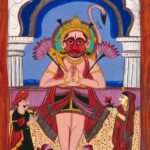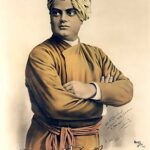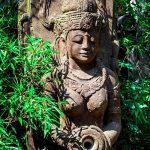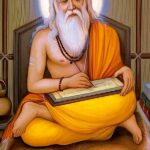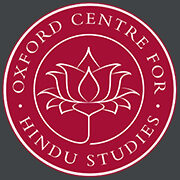Philosophy of Yoga

Yoga is a popular and well-known practice for millions around the world. It is a tool for meditation as much as exercise and well-being. Yoga has been practiced for at least 2500 years and over this time it has evolved and transformed from earlier traditional practice. Many argue that yoga, if practiced and understood correctly, can lead to liberation.
Understanding the philosophy of yoga can provide students with a deeper appreciation for the ancient practice, how it is performed and the core beliefs attached to it. Yoga has deep roots within Hindu culture and religion, but it also holds significance around the world.
This course is for students wanting to understand the core beliefs and ideals surrounding the ancient practice of yoga and its influence on modern culture as well as Hinduism. This engaging and fascinating course will guide students through the philosophical and theological meanings of yoga. Within this course, students will discover the influence of ancient practices and how they have been developed by teachers to form more contemporary methods of yoga.
To learn more about our Yoga Philosophy course, read our course breakdown below. If you are looking for a different yoga course, take a look at our Yoga Studies Learning Pathway.
Start Date: 18 January 2026
Course Duration: Seven Weeks
194 pages
On-Demand Video
The main video component of your course. On-demand means you can watch at the time that suits you.
6hr 32 min
Community Discussions
These free Zoom sessions are not part of your main course materials. They are led by OCHS-affiliated scholars and open to students enrolled in any course.
Explore other areas of Hindu studies! Meet tutors and students from other courses!
Monday, 26 January, 12noon
Tuesday, 3 February, 2pm
Thursday, 12 February, 3pm
Saturday, 21 February, 5pm
Sunday, 1 March, 6pm
These are all UK times. Recordings are available for any sessions you miss
Why study Yoga Philosophy
Yoga today is very different from early descriptions. Although no one knows for sure when it began, the practice has been evolving for at least 2,500 years. Traditional sources are clear about one thing: Yoga is a practice, and if correctly applied, will result in liberation. Apart from having faith that this is true, there is nothing practitioners need to believe.
So, do we need to study philosophy? After all, the most famous definition of Yoga, from Patanjali’s sutras, says that Yoga is about stilling mental activity, not stirring it up. However we do find many different systems, and their theories are mixed and matched in different ways at different times. This yields changes in priorities and techniques. In order to make sense of modern Yoga, and the ways it relates to – or departs from – earlier practice, it helps to know more about this history of ideas.
The course
The course consists of seven sessions delivered on a weekly basis.
Session One: Understanding Classical Yoga
Where does Yoga fit within Indian thought? Here, we look at Vedanta and Samkhya and their influence on theory and practice. We also begin our exploration of early Yoga. Modern Yoga is derived from many different strands of Indian thought and we can trace a significant distinction between the Vedic and tantric influences. We also see how contemporary teachers have reworked and reshaped earlier teachings to a form more suitable for contemporary students.
Session Two: Yoga in the Upanishads and the Mahabharata
We can’t be certain where Yoga comes from or how old it is. However, the earliest known written works to mention it are the Upanishads and the Mahabharata. We begin with the Upanishads, often mentioned as a source of Yoga teachings. We then move on to the extensive Yoga teachings within the Mahabharata and look at the practices these very early passages advocate.
tam yogam iti manyate sthiram indriya-dharanam
apramattas tada bhavati yogo hi prabhavapyayau
“This holding steady of the senses is what is considered to be Yoga. One is then properly
attentive, for Yoga can both arise and also cease to be.” (Katha Upanishad 6.11)
Session Three: Yoga in the Bhagavad-gita
One of the best known sections of the Mahabharata is the Bhagavad-gita. Here, Krishna’s extensive teaching is threaded with Yogic concepts. In this session, we consider the most important ideas of the Bhagavad-gita and we focus on passages that define Yoga.
Click here to download our translation of the Gita in pdf format.
Session Four: Patañjali’s Yoga Sutras (I)
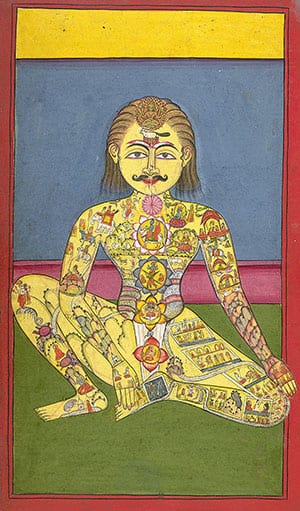
Patañjali’s Yoga Sutras is the foundational work on Yoga philosophy. It is the best known and least understood text on the subject. For all these reasons we give it a central place in this course. In this session we consider the theology and philosophy of Patañjali in the first two of his four chapters (On Concentration, and On Practice). And to do this properly, we delve into the essential context of Indian thought.
Click here to download our translation of the Yoga Sutras in pdf format.
Session Five: Patañjali’s Yoga Sutras (II)
We continue our study of Patañjali with chapters 3 and 4, the Vibhuti-pada and the Kaivalya-pada. We consider the ideas and practices advocated by the text. This is the conclusion of our discussion of classical Yoga. Our next sessions look at the teachings of a later period in which the emphasis moves from the mind to the body.
Session Six: Tantra and Yoga
In modern Yoga you will find much that is not found in Patañjali, Vedanta, or Samkhya. In this session we explore the extent to which contemporary Indian religion is a combination of Vedic and Tantric ideas. This helps us see the influence of Tantra. Given the modern uses of the term “Tantra”, this may seem surprising and so we will begin with a brief overview of what Tantra actually is and, equally as important, what tantra is not.
Session Seven: Hatha Yoga
In this session we examine three of the later Sanskrit texts that discuss the practice of hatha or bodily Yoga. We can see that the ideas and practices they refer to are much closer to current ideas and practices. We will compare this influence to that of Patañjali and other early sources. For this study we focus particularly on Svatmarama’s Hatha Pradipika and its spiritual and philosophical ideas. We will also look at the Shiva Samhita and the Gheranda Samhita.

Everyone who finishes the course will receive a certificate for 12 hours of study.Teachers registered with Yoga Alliance can log these as continuing education with a YACEP.
Associated Courses
Your Tutor
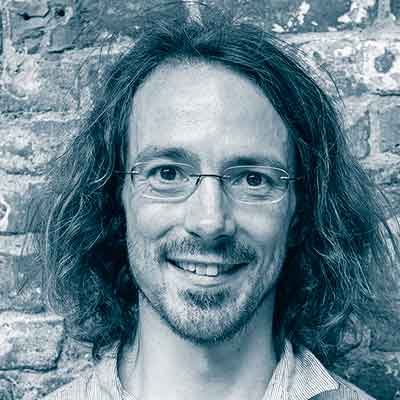
Daniel Simpson
Daniel has a Master’s degree in Traditions of Yoga and Meditation from SOAS, University of London. He’s also a devoted practitioner of asana, pranayama and meditation, which he’s studied on numerous visits to India since the 1990s. Daniel previously worked as a foreign correspondent, which helps him make complex subjects feel accessible. He writes about yoga for magazines and on his website: www.danielsimpson.info
